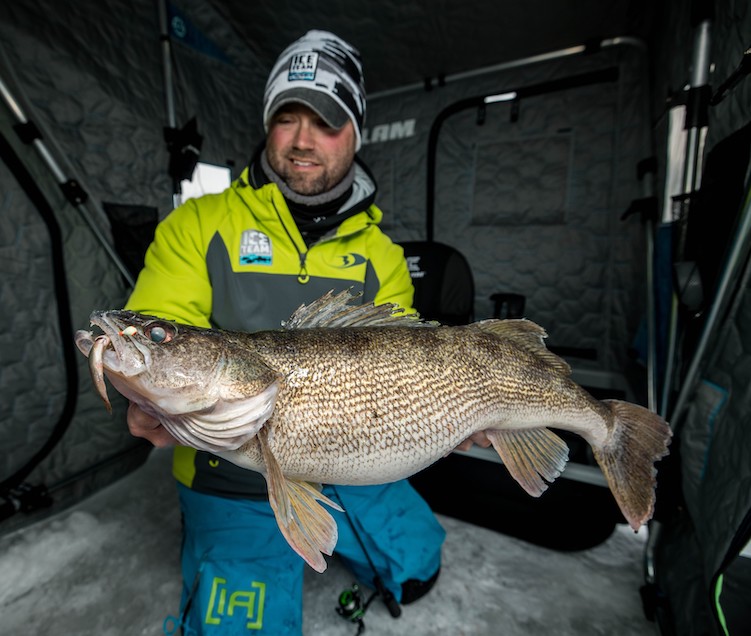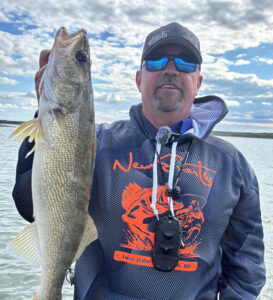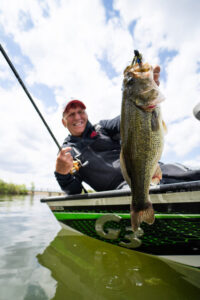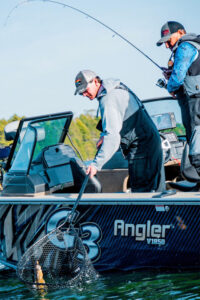FRIGID WEATHER ICE FISHING
by Bob Jensen
We’ve seen some frigid weather during this ice fishing season. The wind on some December days might have kept even the most hard core ice angler at home. If not the wind, the below zero air temperatures would have been a legitimate excuse to stay off the ice. But when the wind and frigid temperatures were combined, it just made sense to wait for another day to go ice fishing. At least that would have been the thought in the not-so-distant past. In today’s ice fishing world, folks who want to go fishing through a hole in the ice can do so even in inclement weather. We just need to employ some of the ice fishing tools that have become available in recent years.
When thinking about going fishing in cold weather, safety should be the primary concern. Certainly we want to catch some fish, but we need to be safe when doing so. Clothing available to cold weather anglers today is both functional and warm and enables an angler to be outside in the frigid weather for a little while. For many and maybe even most of us though, it’s more pleasant and can be more productive to fish inside of a shelter. However, I’m not talking about those shelters that are pulled down the road behind a truck. There are a good number of portable shelters available that enable an angler to be comfortable, mobile, and even enjoy the camaraderie that is part of ice fishing for many people.
Clam has created tub portables that employ a thermal skin. This skin keeps warmth in the shelter much better than those from the past. Clam also has several hub shelters that set up quickly and provide warmth as well as room to move around. They’re outstanding when several anglers want to share a shelter. Hubs like the X-600 Thermal are very nice when Mom or Dad or both want to take the youngsters fishing.
Portable shelters, both the tub style and the hubs, offer comfort but also mobility. However, if you decide to fish from a stationary position, it’s kind of like fishing from an anchored boat. It’s not a bad thing, we just need to do things a bit differently. When an angler is fishing outside of a shelter, that angler will often move quickly from hole to hole, using just one rod much of the time. When fishing from a shelter, it pays to have a rod in your hand and another rod, a dead rod, in a hole a couple of feet away. By doing so, you can use a more aggressive presentation, maybe a jigging spoon on the rod you’re holding, and a more passive presentation on the nearby rod. Many anglers go with a simple hook/splitshot/bobber set-up on the dead-rod. Other anglers prefer to not use a bobber and just watch the rod tip as a strike indicator.
On the dead rod, pay very close attention to where you set your bait. This is another situation when a sonar unit really pays off. Something like a FLX-20 will reveal the level that the fish are at, which will indicate where your bait should be set. Set your bait so it’s about a foot above the fish. In clear water where the fish can see farther, they will often be a bit farther off the bottom than they will be in stained water. In stained water, fish will usually, not always but usually, hug the bottom. Be sure to know how many lines are allowed on the body of water that you’re fishing.
Don’t let cold weather keep you away from ice fishing. Think safety first. Use clothing and equipment designed for cold weather. If you do, you’ll be able to enjoy ice fishing throughout the winter.
PHOTO CAPTION—Matt Johnson took this walleye while fishing from a portable shelter. Notice how much room Matt has for equipment and to move around inside the shelter.





